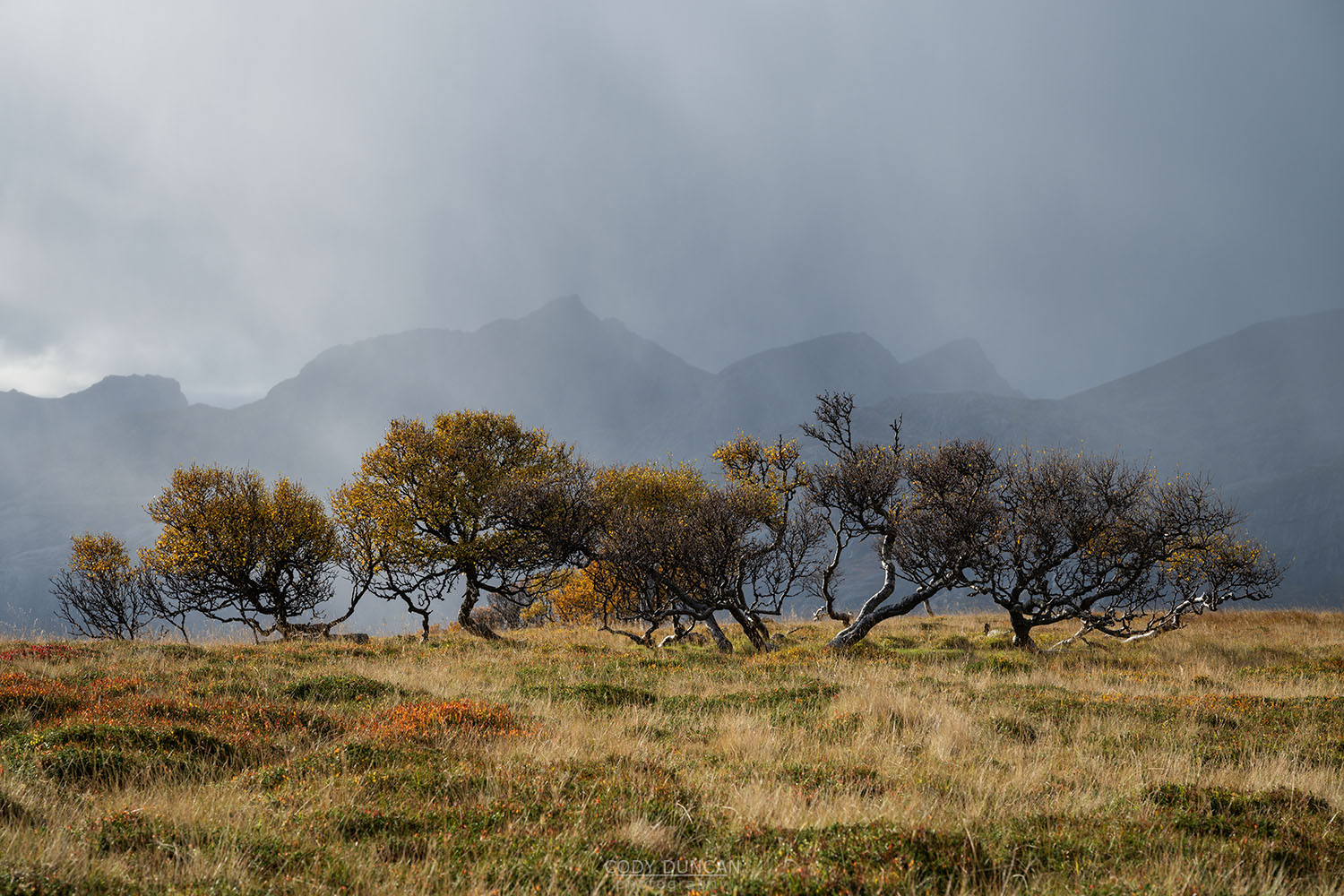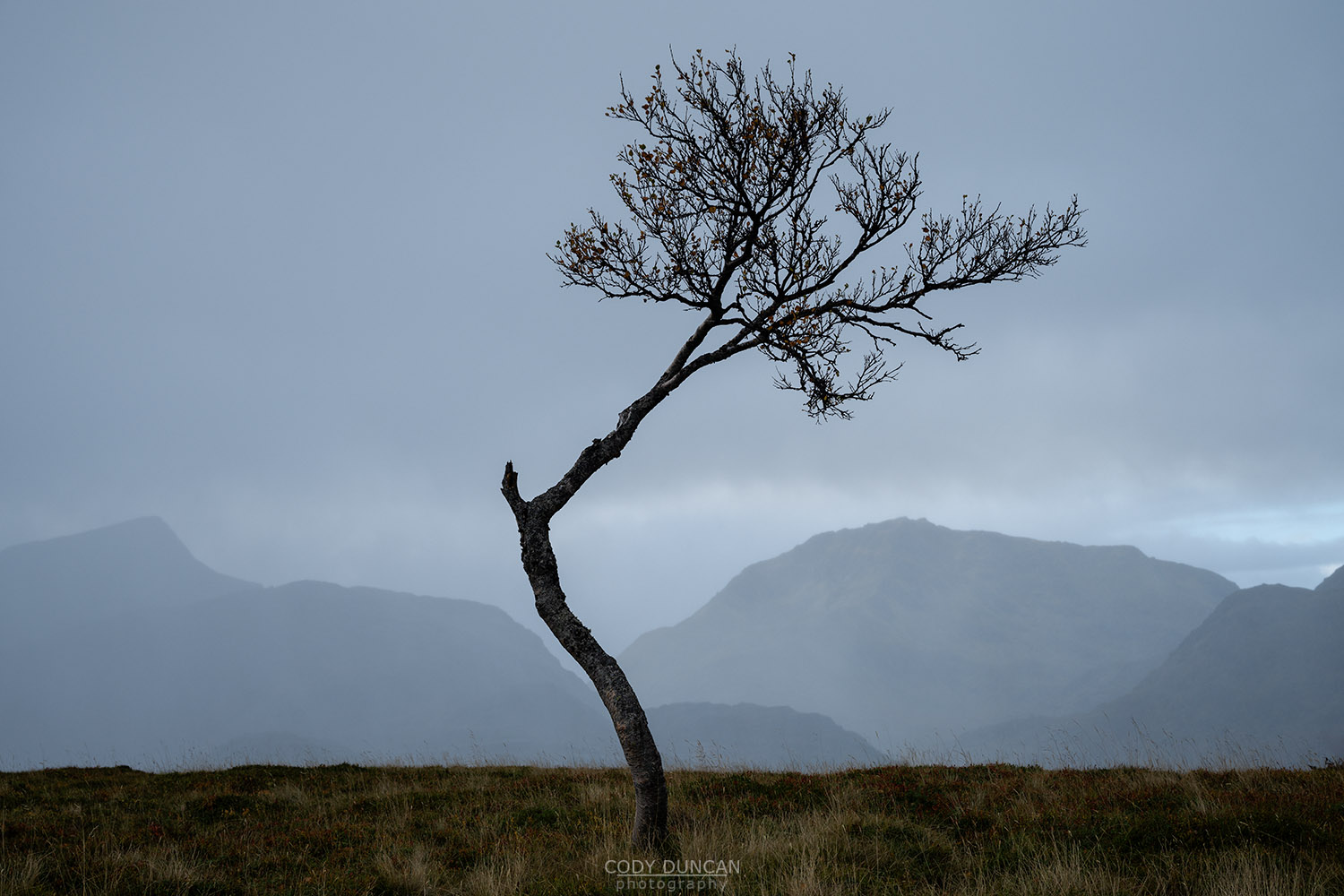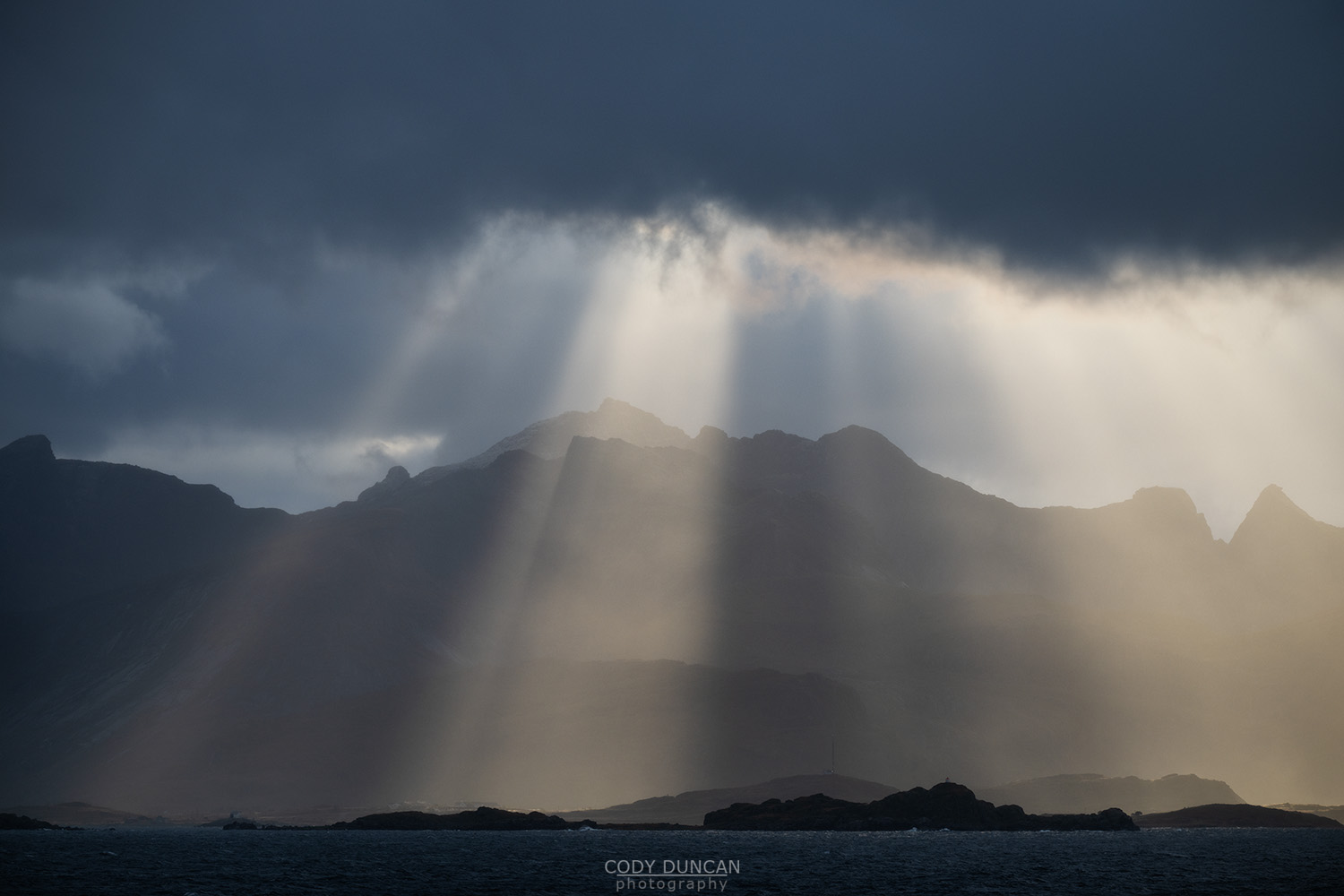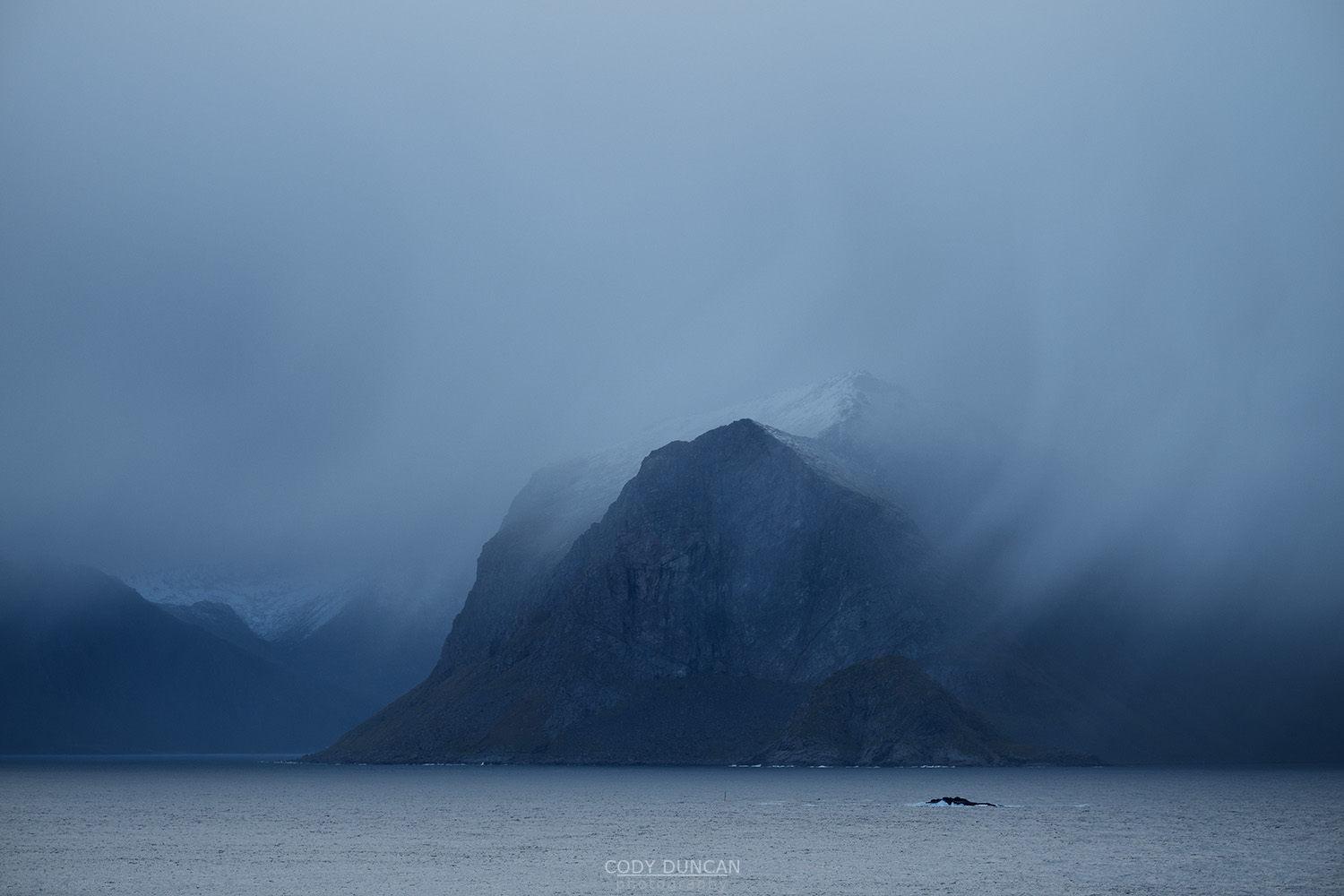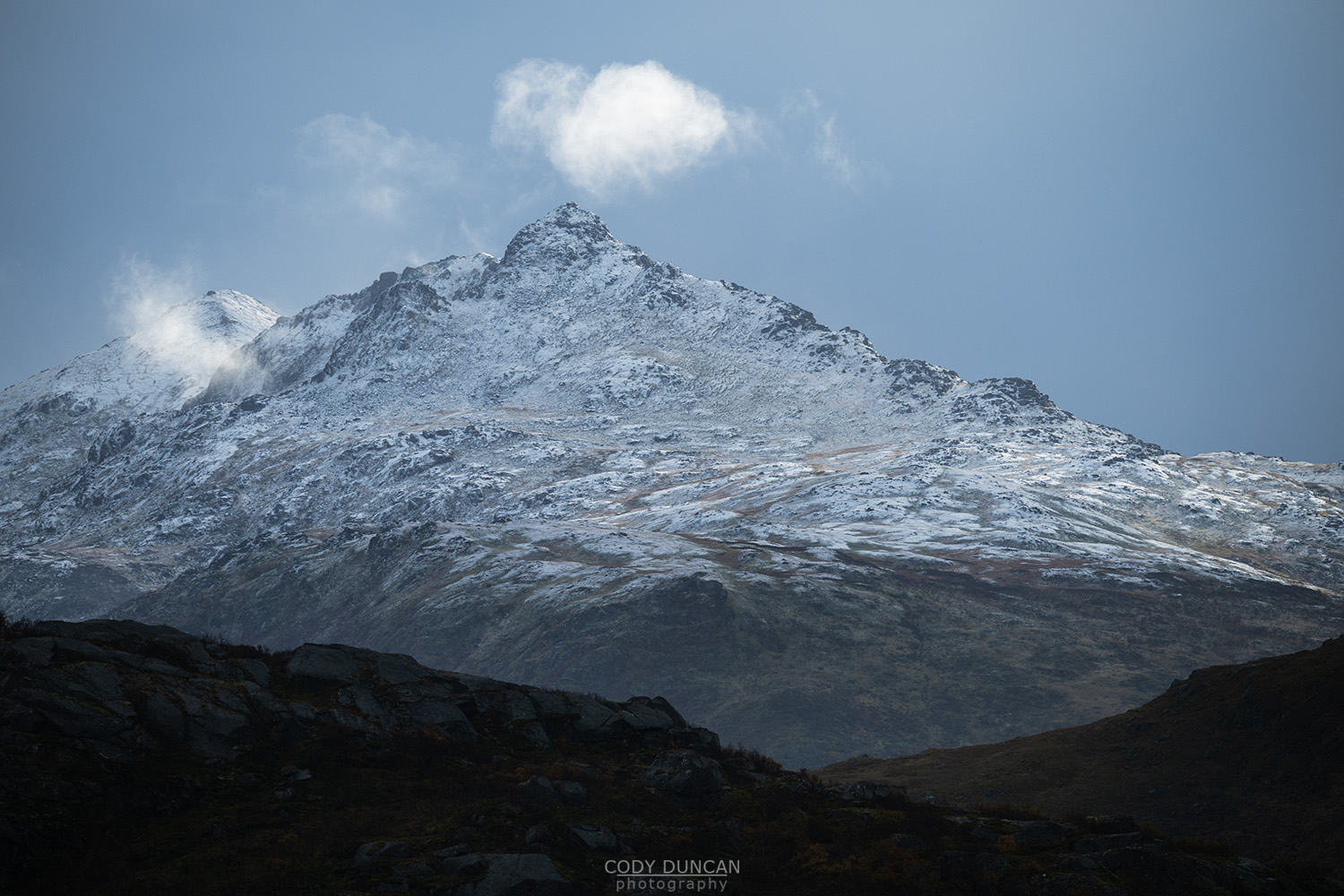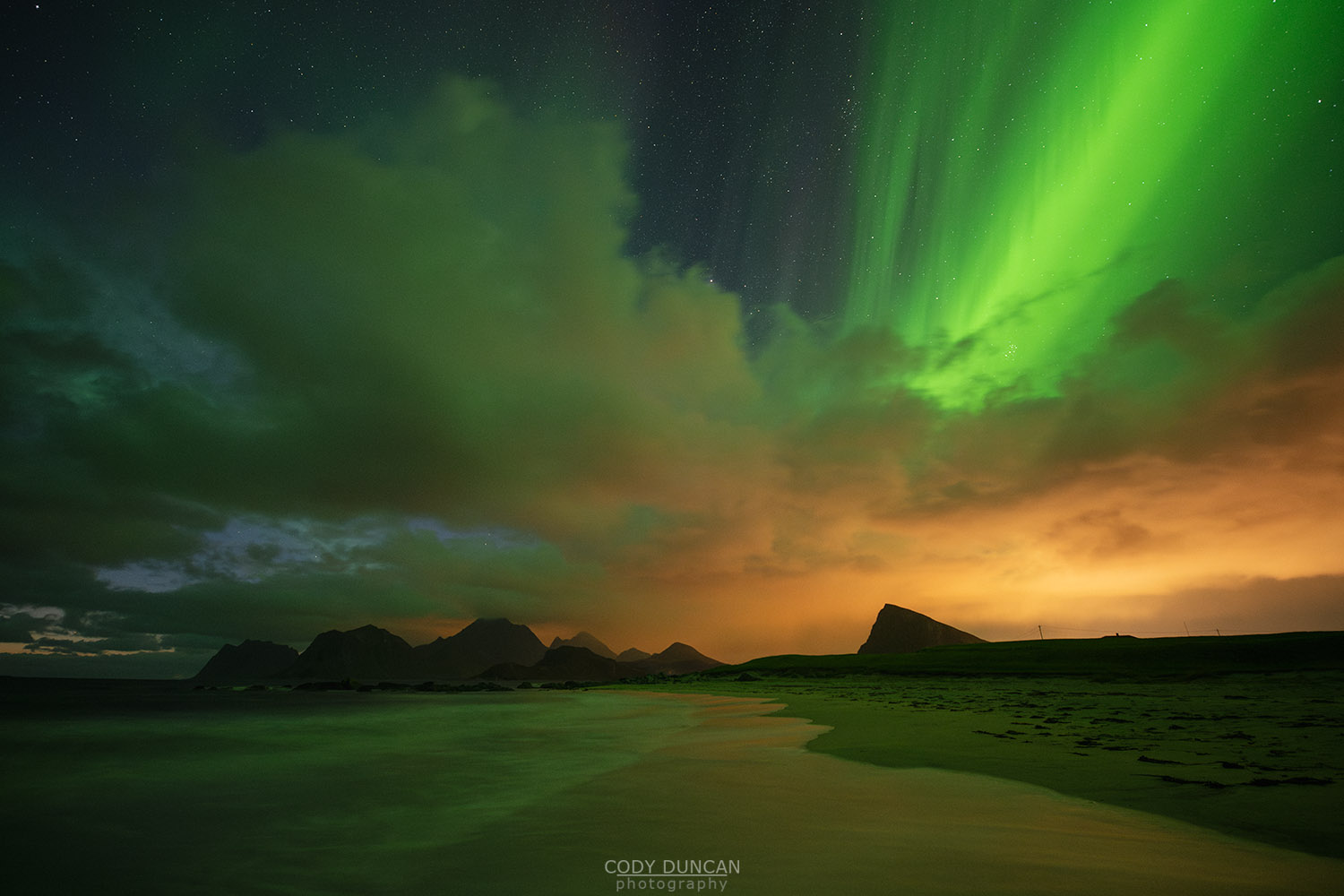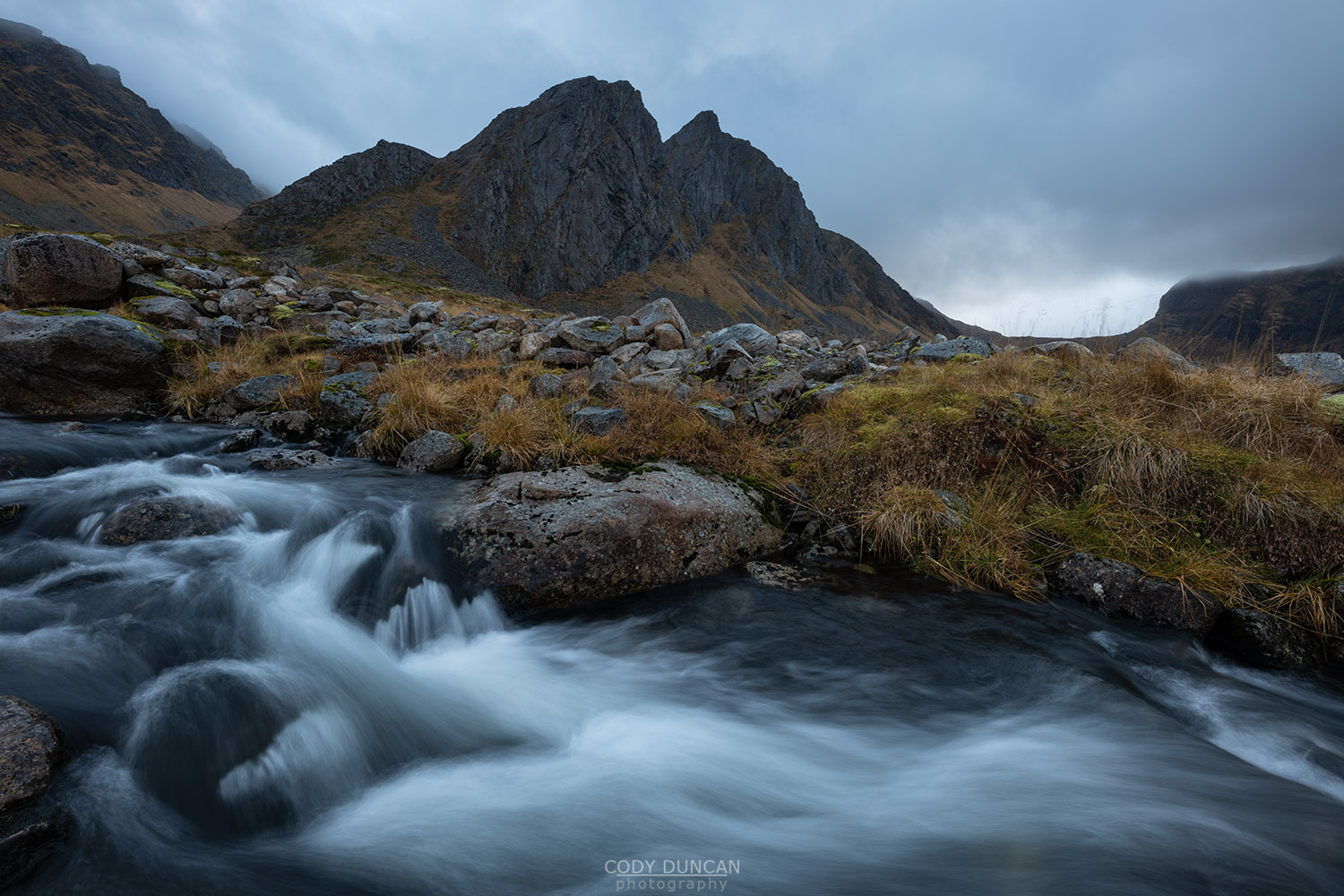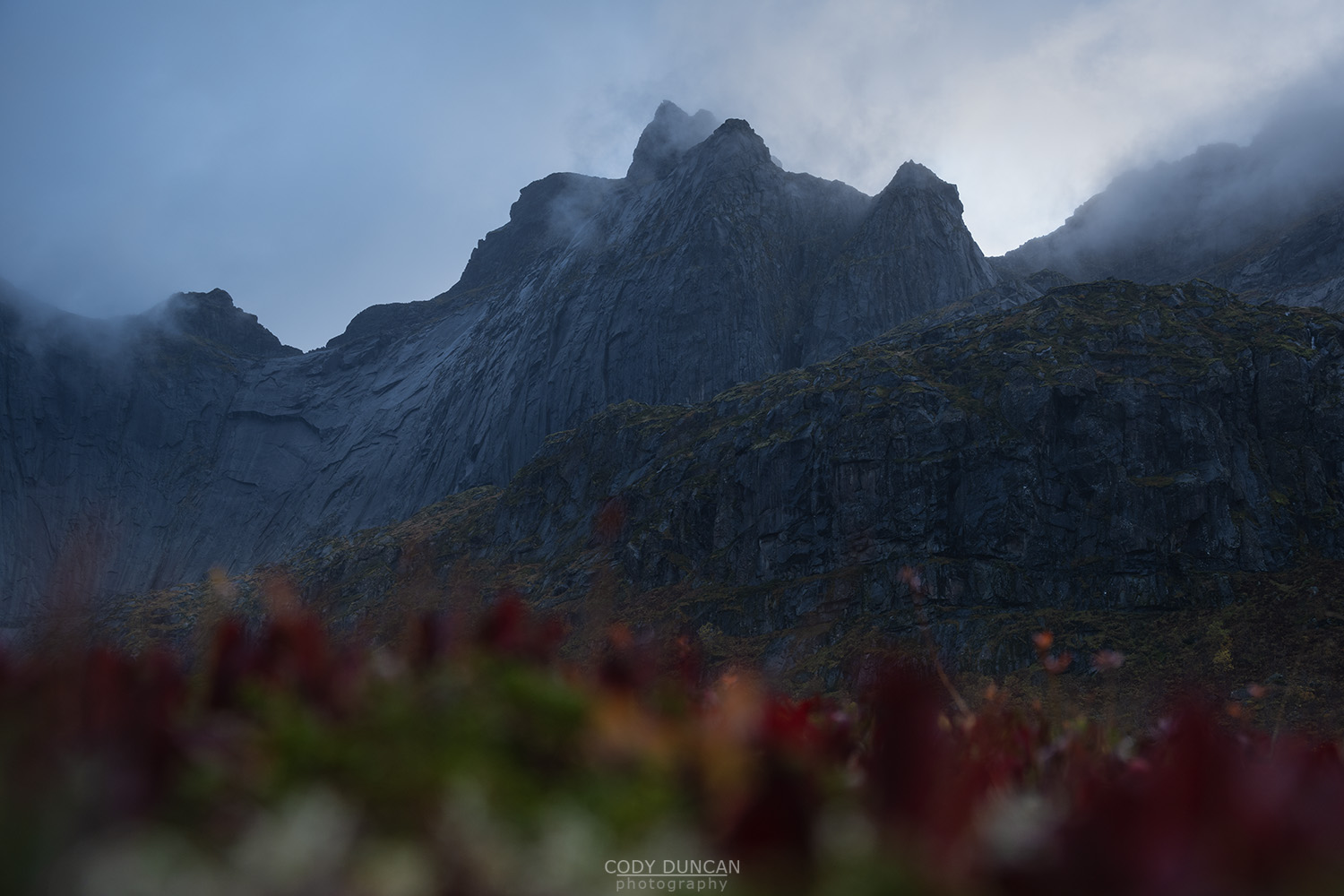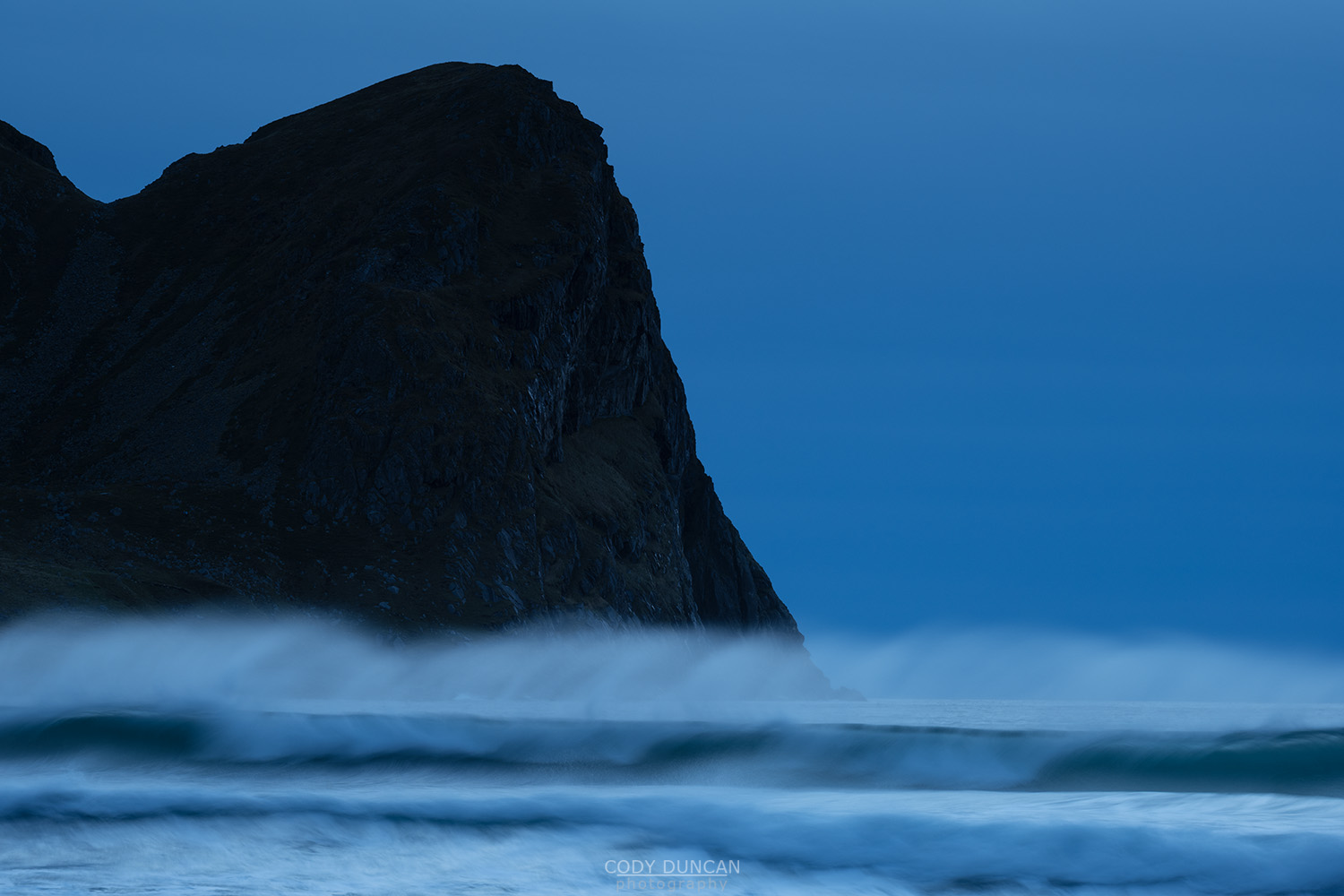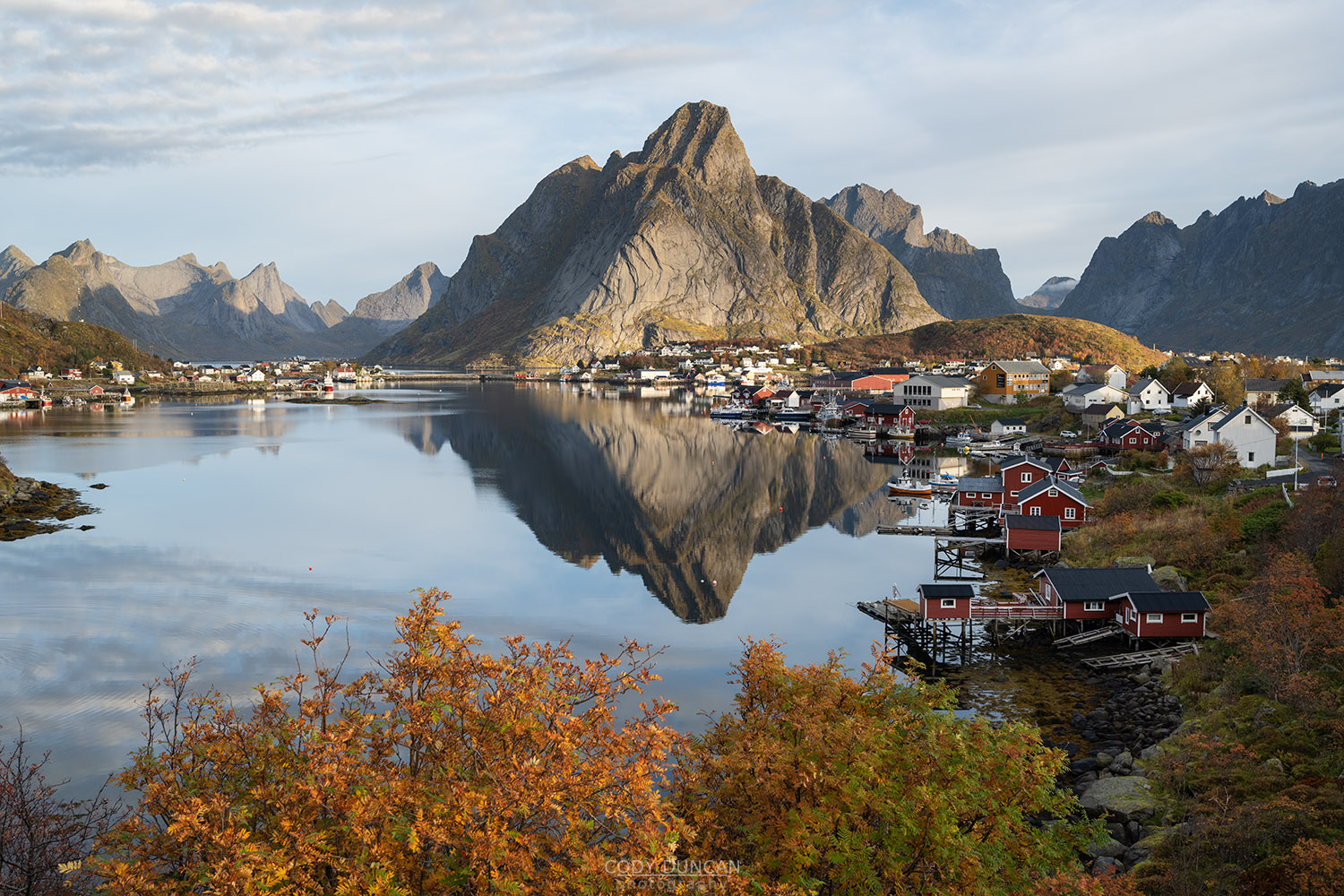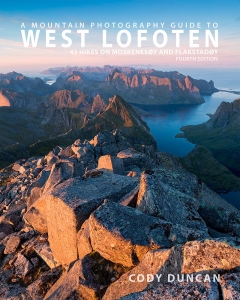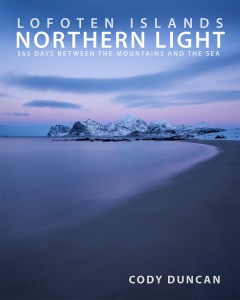Friday Photo #564 – Haugheia Trees
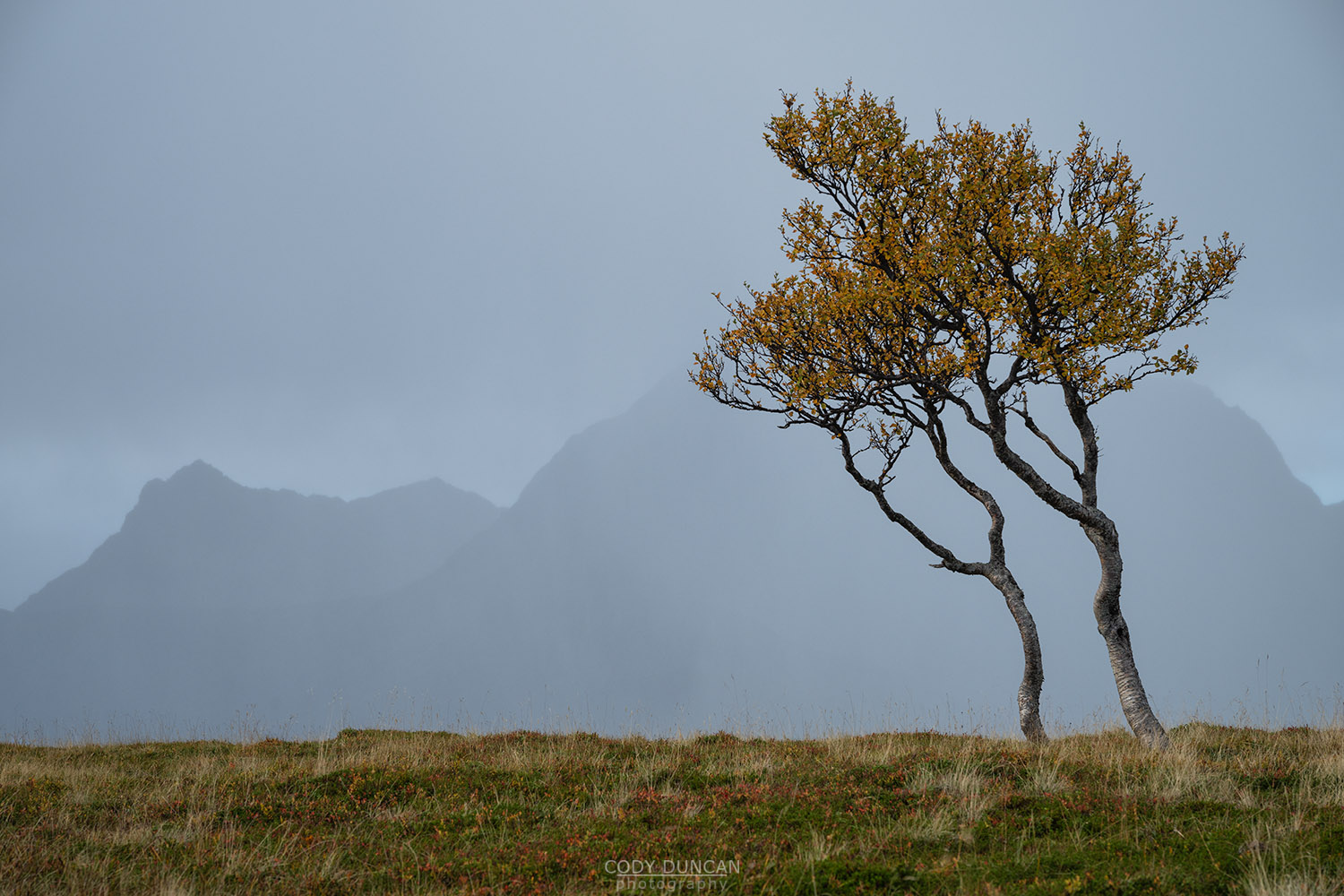
Photo: Last golden leaves of autumn on mountain birch trees of Haugheia, Vestvågøy, Lofoten Islands, Norway. October 4, 2023. 14:04
By now the the bright colors of autumn are beginning to fade at Lofoten waits for winter to set it. This year the color seemed to be a little later than normal, perhaps due to the warm and dry summer and mild, but wet September. But like everything else associated with Lofoten, there is no predicting anything, you just have to be here and see what you get.
Over the last couple years Haugheia (hiking guide here) has turned into my favorite little hike just to get a bit of exercise if I’m on my way to Leknes. And while I always carry my camera bag, mostly just for the weight, I probably only take photos 25% of the time. And usually when I do shoot photos, I’m going there specifically to do so. Otherwise, I typically go there is stormy conditions that aren’t always photogenic, preferring to safe the photogenic weather for proper mountains.
On this day I took my autumn workshop group up the hill to visit my favorite grove of trees. It was a cold and blustery October day, with several rain/hail/sleet showers passing, which added to the atmosphere as the mountains vanished into the clouds. Much nicer conditions than the last Haugheia photo I posted (Friday Photo #540), taken on a particularly grey day in May.
The autumn winds will now have blown all but the hardiest of leaves from twisted branches and the trees will sit through the winter and spring, waiting for the summer sun to turn them green again. I’m not actually sure which version of the trees I prefer, but it might be the leaf-less winter version, for some individual trees at least.
Head over to my Instagram account for (almost) daily postings of the local conditions here on Lofoten: @distant.north
Camera Info:
Nikon z8
Nikon 24-120mm f/4
91mm
ISO 100
f 8
1/125 Second
WB Daylight
